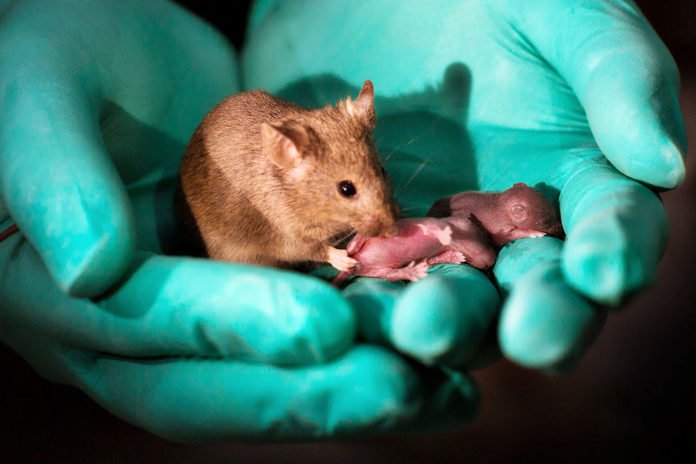Scientists at the Chinese Academy of Sciences have used stem cells and genetic manipulation and successfully produced 29 live, healthy offspring from same-sex parents.
The outcomes suggest that the biological barriers to same-sex mammalian reproduction can now be circumvented. Although the technique is not efficacious as pups from two fathers were also born but only survived for around 48 hours.
To produce healthy mice, scientists needed to get around the genomic imprinting barrier, in which certain maternal or fatherly genes are imprinted (artificially labeled) and turned off amid the underlying phases of embryonic development.
Since some genes imprinted in a mother’s genetic material aren’t imprinted in the father’s, and vice versa, a mammalian offspring needs material from parents of both sexes in order to get all of the necessary activated genes.
Co-senior author Qi Zhou said, “We were interested in the question of why mammals can only undergo sexual reproduction. We have made several findings in the past by combining reproduction and regeneration, so we tried to find out whether more normal mice with two female parents, or even mice with two male parents, could be produced using haploid embryonic stem cells with gene deletions.”
Scientists used haploid embryonic stem cells (ESCs), which contain half the normal number of chromosomes and DNA from only one parent and which the researchers believe were the key to their success. The researchers created the mice with two mothers by deleting three imprinting regions of the genome from haploid ESCs containing a female parent’s DNA and injected them into eggs from another female mouse. They produced 29 live mice from 210 embryos. The mice were normal, lived to adulthood, and had babies of their own.
Co-senior author Baoyang Hu said, “We found in this study that haploid ESCs were more similar to primordial germ cells, the precursors of eggs and sperm. The genomic imprinting that’s found in gametes was erased.”
Co-senior author Wei Li said, “There are still obstacles to using these methods in other mammals, including the need to identify problematic imprinted genes that are unique to each species and concerns for the offspring that don’t survive or that experience severe abnormalities. They do hope, however, to explore these techniques in other research animals in the future.”
“This research shows us what’s possible. We saw that the defects in bimaternal mice can be eliminated and that bipaternal reproduction barriers in mammals can also be crossed through imprinting modification. We also revealed some of the most important imprinted regions that hinder the development of mice with same-sex parents, which are also interesting for studying genomic imprinting and animal cloning.”
The work, presented October 11 in the journal Cell Stem Cell.
